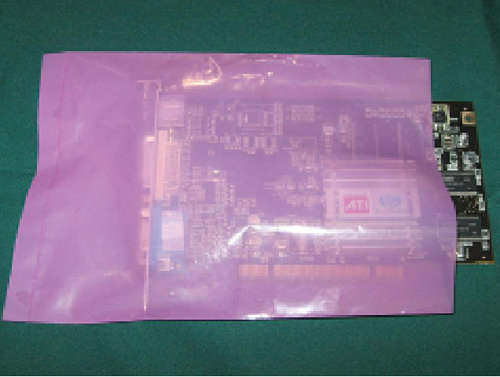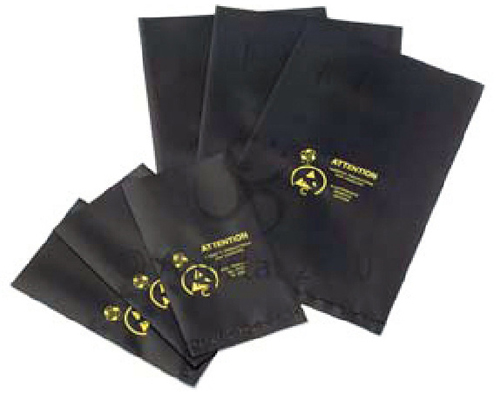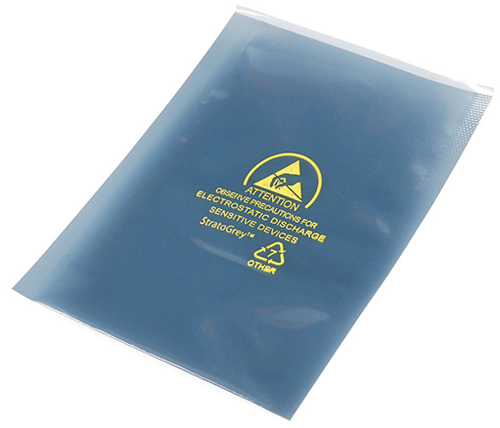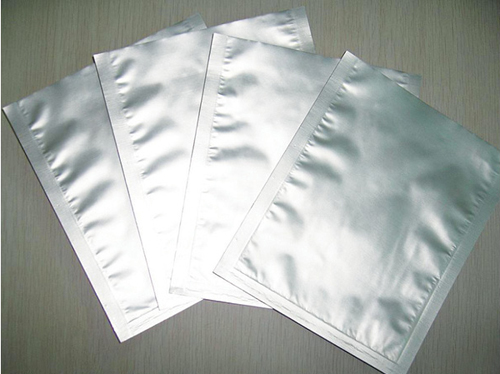There are several types of anti-static bags available in the market and just by looking at them you will not be able to gauge their capabilities. Here is how to distinguish them.
Pink poly bags (dissipative poly bags). These bags have the ability to dissipate a static charge to ground, which keeps charge from building up on the package. The material is also anti-static, so it will not charge up through tribocharge. The material’s resistivity is in the dissipative range and is usually 109 to 1011. Unfortunately, these bags have no shielding ability. A static field or discharge occurring outside the bag will easily penetrate the bag and damage the electronics inside.

Black conductive poly bags. Black poly bags are highly conductive (with a resistivity of 103 to 104) compared to the other bags. These dissipate the charge very quickly but unfortunately this fast dissipation also creates the possibility of sparking at their surface. As the material is conductive, it does provide some small amount of shielding. However, there is no plastic layer (dielectric) to isolate a device inside the bag. The charge may be transferred through the volume of the material to the device instead of around the material to ground.

Shielding bags. Shield bags provide dissipative and anti-static attributes as well as add a metal shield and polyester dielectric to stop static from entering the bag. The test for shielding demonstrates the difference between various bags. Shield bags generally stop 97 per cent of a 1000V static pulse applied to the outside of the bag from reaching the inside. Pink poly bags stop only about 10 per cent and black bags about 30 per cent.

Moisture barrier bags. Moisture barrier bags provide dissipation, anti-static and static shielding properties together with moisture vapour barrier. The moisture barrier protects moisture-sensitive items and improves long-term storage.

Then there are other products like pink bubble bags, antistatic foam and anti-static boxes, which are generally used in packaging for improving the reliability of the equipment in fields.
Once all the above-mentioned five points are implemented, you can be rest assured that you have beaten up one of the biggest devils of the electronic industry. However, it is also important to keep a regular check on all ESD-safe materials for their performance.
Wrist strap/footwear tester
As mentioned in ANSI/ESD S20.20, test equipment are required to ensure compliance and they should be selected to make measurements of appropriate properties of the technical requirements that are incorporated into the ESD programme plan.
Wrist strap/footwear tester is a highly recommended and widely used testing device that can be used to ensure the compliance for proper grounding of the workers. Consider buying one to complete your electrostatic-protected area.
The author is a technical editor at EFY






